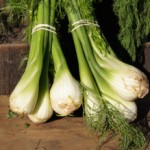 About Fennel
About Fennel
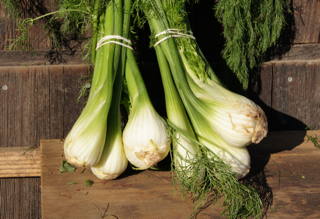 A bulb of fennel looks like a bunch of celery with a wide, round base. It is a member of the parsley family and is prized for its mild, licorice flavor. The individual stalks are beautifully plaited, and broad and thin, while the tops are round and fleshy. Fennel leaves are ferny and also have a licorice flavor. All parts are edible. The stalks and bulb can be used raw, chopped in to salads, or cooked. Sautéing in butter with a simple fresh herb highlights its pleasant taste, and steamed fennel with a cream sauce is also excellent. English cooks in centuries past made a cod fennel soup with the sliced stalks, some wine, sugar, ginger, and almonds. The leaves are an herb that can also be chopped and used as a garnish.
A bulb of fennel looks like a bunch of celery with a wide, round base. It is a member of the parsley family and is prized for its mild, licorice flavor. The individual stalks are beautifully plaited, and broad and thin, while the tops are round and fleshy. Fennel leaves are ferny and also have a licorice flavor. All parts are edible. The stalks and bulb can be used raw, chopped in to salads, or cooked. Sautéing in butter with a simple fresh herb highlights its pleasant taste, and steamed fennel with a cream sauce is also excellent. English cooks in centuries past made a cod fennel soup with the sliced stalks, some wine, sugar, ginger, and almonds. The leaves are an herb that can also be chopped and used as a garnish.
Among herbalists, fennel is viewed in several ways: as an intestinal antispasmodic, for relieving intestinal spasms or cramps; as a carminative, for relieving or expelling gas; or as a stomachic, for toning and strengthening the stomach; and as a anodyne, for relieving pain.
To prepare, separate the stalks, cut off the base where they are connected then pull the stalks apart gently. To cut the bulb into wedges, trim the base no more than necessary then carefully quarter the bulb lengthwise. If left exposed to the air for a very long time, the flesh can discolor. Either rub cut parts with lemon or place in a bowl of water splashed with vinegar for no longer than 30 minutes.
The feathery leaves make a nice garnish or can be chopped and used as an herb. The top round stalks can be used for a stock seasoning. Fennel is delightful raw, dipped in light sauces, and a lovely addition to salads. It is best roasted, braised, grilled, or sautéed. Or it can simply be simmered in a seasoned stock. Fennel is wonderful with fish, tomatoes, oranges, apples, walnuts, cheeses, lemon, and dill. Allow about ½ bulb per serving.
Endive or Lettuce Boats Stuffed with Fennel, Apples, and Walnuts
Spinach, Arugula, and Fennel SaladCarrot and Fennel Soup
Fennel Frittata
 About our Strawberries
About our Strawberries
We plant over 80,000 strawberry starts every year in our fields, growing two to three varieties: Albion, Chandler, Seascape. This mix of early- to late-bearers provides us with consistent flavor and harvests throughout the fruiting season in our area, which usually begins in mid-April and runs through October (some years even into November).

We do our best to ripen the berries in the field as much as possible, and the weather conditions they experience in the last couple days before harvest make a huge difference in their store-ability. Early in the season, and with consistent cooler weather, they remain firm when ripe and can store well for up to a week. In summer heat, when nighttime temps remain high, and wetter conditions the berries can be far more fragile, and they’ll quickly become mushy and moldy if not enjoyed right away. At these times we highly recommend processing the berries in some way as soon as you get them home, if you haven’t already eaten them all on the way there ;-). If you are not going to use summer-ripe berries within the first day or two, consider freezing them for making a smoothie, cobbler, pie filling, or sauce at a later date.
Click here for a video of Farmer Tom talking about growing strawberries organically, or go here: https://www.youtube.com/watch?v=MKY-deJbKJI
(video produced by Veggie Box)
Here are some storage tips: do not wash the berries until you are ready to use them. When you get them home, remove the berries from the basket or clamshell, eating or discarding any that look really ripe or kind of sad. Place remaining berries in a single layer in a close-able container lined on the bottom with paper towels. Put the lid on the container and place in the fridge. Under ideal fridge conditions, the berries ought to keep a number of days this way.
While terrific just on their own, there are many ways to use strawberries. For instance, they can be sliced up to top off a piece of buttered toast with honey for breakfast, or sprinkled in a dinner salad to add a little sweetness.
Here are some other recipe suggestions that include them:
Agua Fresa with Strawberries
Strawberry-Rhubarb Compote with Ginger and Lime
Strawberry Sorbet
Strawberry Muffins
I love that rich, musky, almost sweet aroma of a freshly plowed field.
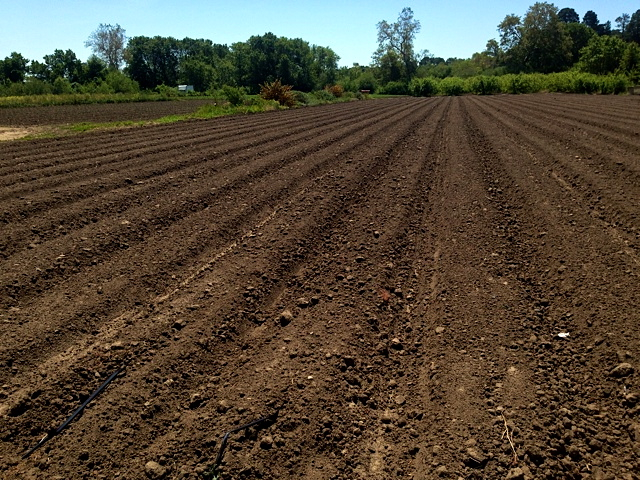
This is the time of year when a lot of attention and energy is spent preparing fields, a process that can’t be rushed. Right now we are mowing and tilling winter cover crops into the soil – a mix of vetch, bellbeans, peas and oats – which microorganisms will break down to release essential nutrients to ensure healthy soil for growing crops.
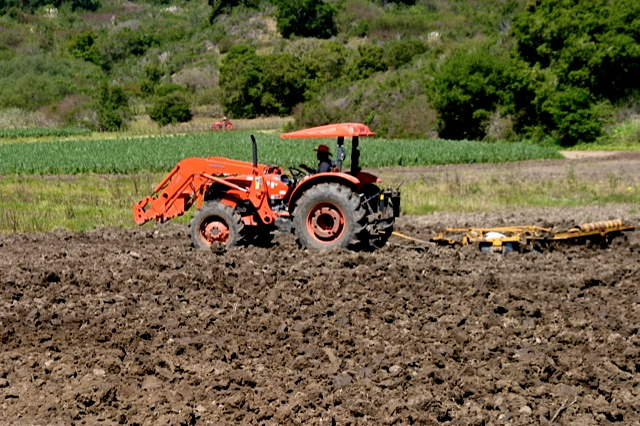

Most of our crops are raised from seed in a greenhouse. The moment a seed is sown the clock starts ticking. Field preparations need to be timed so as to overlap with the maturity of the seedlings and the farm’s planting schedule. Right now, the greenhouses are filled with thousands of plants waiting to be transplanted into the fields.
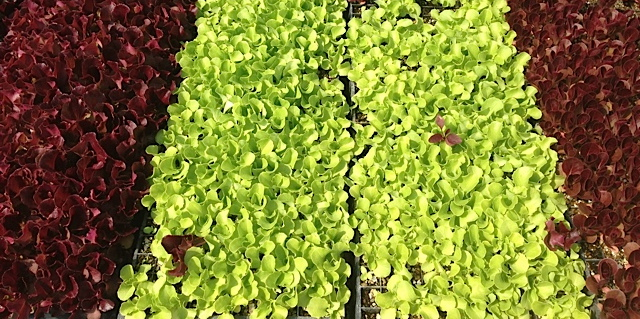



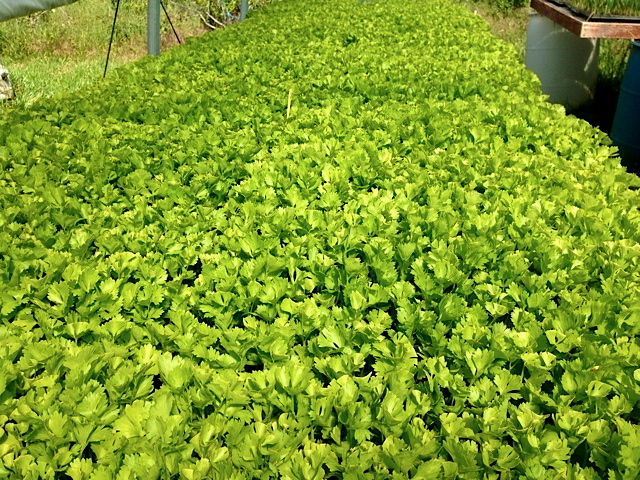
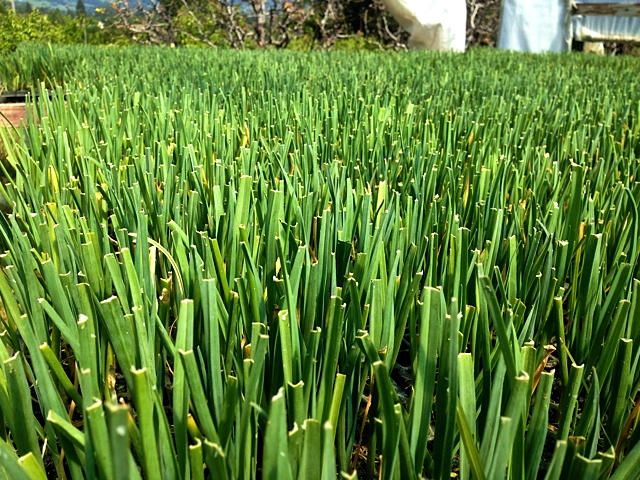
We use a mechanical transplanter to help us, otherwise every seedling would need to be transplanted by hand; a job both time consuming and taxing on the body. With a transplanter, seedlings are placed into a rotating carrousel, dropped into a furrow and gently tucked in by two “pressing wheels”.


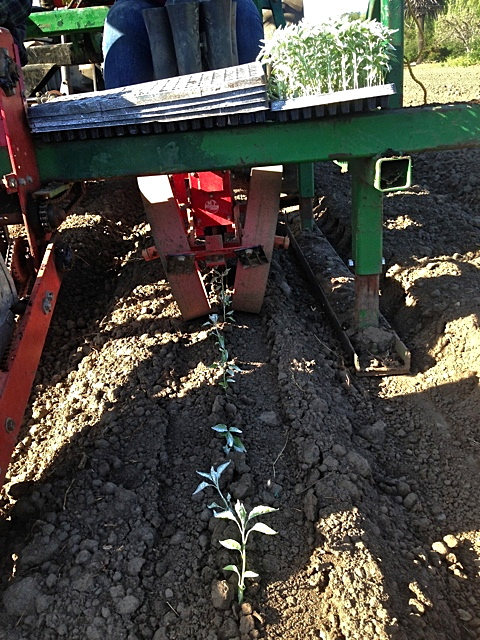

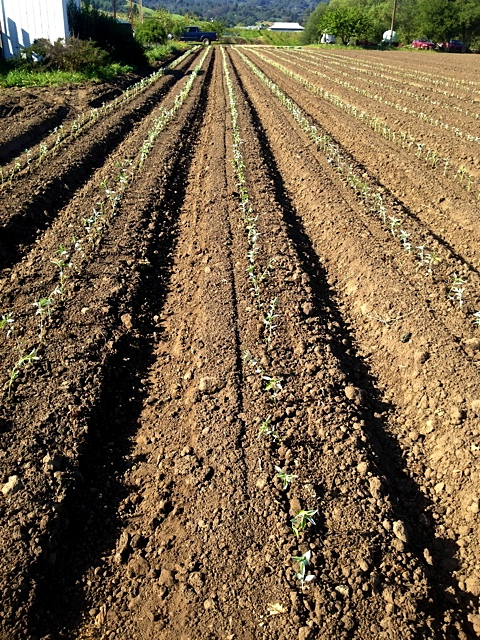
So far we are right on schedule. We finished planting our second block of dry-farmed tomatoes, and the peppers – both sweet varieties and the spicier padrones and poblanos – were planted yesterday. Next up are heirloom and cherry tomatoes, radiccio, frisee, escarole, summer squash, lettuce, dill, fennel, celery, parsley, broccoli, cauliflower, chard, kale, basil and tomatillos.
The first summer squashes are starting to mature. Potatoes are growing well, and we’ll be harvesting the first spring potatoes by the end of May.

The earliest maturing tomatoes are always the sweet Sungold cherry tomatoes, and if you are wondering when to expect them, my guess is we’ll see them the first or second week in July – soon after our Blenheim Apricot harvest.
Spring may enchant with the promise of flowers and new growth but no matter how beautiful the apricot blossoms or lush the tomato plants, we need to be patient and provide the nurturing care that’s needed before we can harvest the nourishing bounty of summer.
Farmer Denesse Willey of T&D Willey Farms says it so well in one of my favorite quotes:
“To plant a seed and believe that it will germinate, out-compete weeds, bloom, set fruit, and be harvested and sold at a fair price is a great leap of faith.”
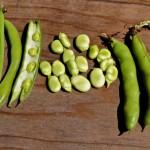 Fava Beans – Slow Food Moment
Fava Beans – Slow Food Moment
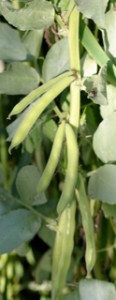 When it comes to Fava Beans, patience has it’s rewards. I love these beans, only available in the Spring, they are a seasonal treat. Debbie Palmer (Live Earth Farm’s first CSA coordinator) developed a recipe database, still available to members – thank you Debbie 🙂 – chockfull with amazing recipes and cooking tips. Here is what she recommends on how to handle Favas:
When it comes to Fava Beans, patience has it’s rewards. I love these beans, only available in the Spring, they are a seasonal treat. Debbie Palmer (Live Earth Farm’s first CSA coordinator) developed a recipe database, still available to members – thank you Debbie 🙂 – chockfull with amazing recipes and cooking tips. Here is what she recommends on how to handle Favas:
When to eat fava pods whole, when to shell them, and when to skin the beans inside
Here’s my rule of thumb: while the pods are still nice and green and smooth, and the beans inside are relatively small, eat ‘em pod and all (see recipe ideas in database). Even if the beans inside are starting to looking big enough to eat on their own, if the pods are still in good shape I’m cool with eating the favas pods and all (but if you prefer to shell them, shell away; it’s up to you). Once the pods get big and kind of warty-looking (which they do!), I’d definitely shell ‘em.
In a similar vein, the question of whether to peel the beans inside is up to you (and maybe depends on how you’re going to use them). I skin ‘em or not kind of according to my mood. If they’re really big, I generally peel them, but if they’re small, I often don’t bother. If you’re going to be using them whole in a pasta dish or soup or something, it’s six one way half-dozen the other. If you’re going to be making a puree or spread though, you’ll want to skin them first. It’s a texture and a taste thing (as well as an appearance thing). Try it both ways and see what you like best! The skinned beans are a prettier bright green, versus the skin-still-on beans, which are a paler green.
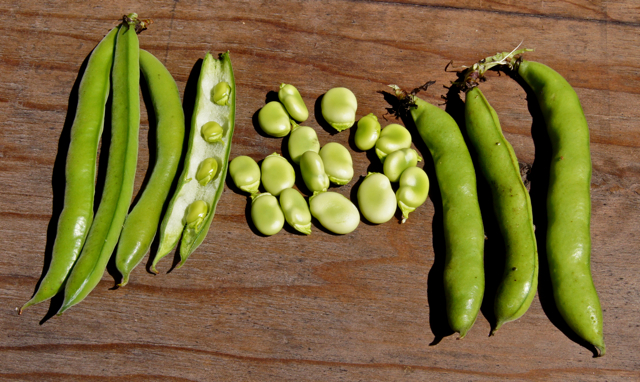
 Artichokes are a great source of dietary fiber, magnesium, the trace mineral chromium, vitamin C, folic acid, biotin, the trace mineral manganese, niacin, riboflavin, thiamin, vitamin A, and potassium. A medium-size artichoke delivers all these nutrients for a mere 60 fat-free calories, and also provides 4.2 grams of protein, no cholesterol, 0.2 grams of fat, and 11.32 grams of carbohydrate with 5.4 grams of fiber.
Artichokes are a great source of dietary fiber, magnesium, the trace mineral chromium, vitamin C, folic acid, biotin, the trace mineral manganese, niacin, riboflavin, thiamin, vitamin A, and potassium. A medium-size artichoke delivers all these nutrients for a mere 60 fat-free calories, and also provides 4.2 grams of protein, no cholesterol, 0.2 grams of fat, and 11.32 grams of carbohydrate with 5.4 grams of fiber.
Scientific research shows artichokes have a long history of treating many liver diseases. One of the active compounds, cynarin, is found in the leaves, and in the bracks and heart. Artichoke leaf extracts have demonstrated significant liver-protecting and re-generating effects. They promote the flow of bile and fat to and from the liver. This is important because if bile is not transported adequately to the gallbladder, the liver is at risk of damage.
Tips for preparing:
Rinse each artichoke under cold running water, or swish it vigorously in a large bowl of water. Once properly cleaned, with a sharp knife, cut the artichoke’s top-most inch to remove upper inedible leaf tips. Trim the remaining outer leaves with kitchen shears. To prevent cut parts from darkening, rub them with lemon juice or place entire choke in a bowl of cold water with lemon juice or vinegar added. Immediately before cooking, pull off any coarse leaves at the bottom, and cut the stem flush with the base.
Artichokes can be steamed, baked, or boiled and are delicious eaten warm or cold. Artichoke hearts can also be sautéed or stir-fried alone or with other vegetables in small amounts of broth or oil.
To steam artichokes, stand trimmed choke, stem end down, in a vegetable steamer and cook, covered, over boiling water. You can add garlic slices tucked between some of the leaves and drizzle with a little olive oil before you start steaming. The cooking time ranges depending on the size of the artichoke – 25-40 minutes or so. You can poke the heart to check for tenderness. If the chokes aren’t done you can always put them back and cook another 5 minutes, or until tender.
Follow the same procedure to boil, adding 1 tablespoon of lemon juice or vinegar to the water that completely covers the artichokes and is boiling. Cooking time is about the same.
Try an olive oil and balsamic vinaigrette for a dipping sauce, or an Asian flair with soy sauce, lemon juice, or rice vinegar, minced garlic, and grated fresh ginger, and a dash of dark toasted sesame oil. For a rich creamy dip, try whole Greek yogurt for the base – flavor with roasted red bell peppers; roasted eggplant, lemon juice and garlic; or a rich blue cheese-buttermilk-based dressing.
 The Joys of Farm Life
The Joys of Farm Life
Oh, what a surprise, I didn’t expect them to be that sweet and juicy. During my field walk checking on two-spotted-spider mites in the strawberry patch, I got completely distracted sampling what must be one of the earliest strawberries I have ever had. The plants are still young and putting most of their energy into growing leaves and roots, but some developed an early set of flowers that have turned into surprisingly nice fruit. Under “normal” winter conditions, these early strawberries tend to be misshapen and blemished and are pinched off. This year, though, they are worth snacking on.

Farmer Tom taste testing the first of the strawberries.
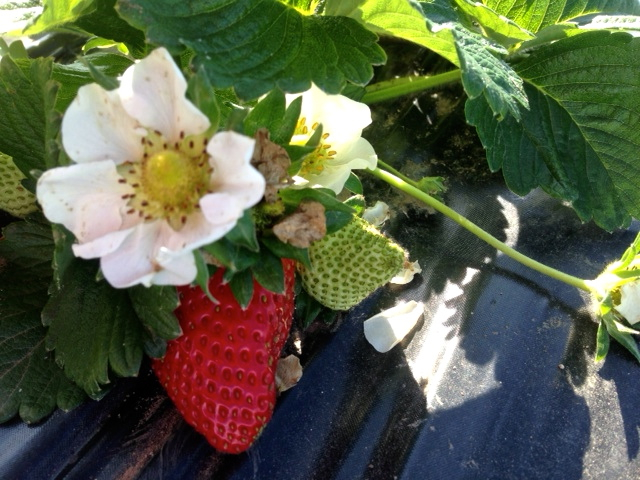
Lots of strawberry blossoms and hidden gems under them.
The farm has sprung alive with the Apricots and Santa Rosa Plums in full bloom. The tractors are busy turning under winter-fields of kale, broccoli and cabbage while preparing new fields for transplanting and sowing of spring crops – English peas, spring onions, spinach, kohlrabi, fennel, potatoes and bok-choi – to name a few. As we are about to turn the seasonal corner into spring I recognize this familiar feeling of both eager anticipation and intense anxiety. There is a huge amount of work that looms ahead and grows with the lengthening days: field preparations, seeding, cultivating, planting, pruning, harvesting, equipment repairs & maintenance schedules, deliveries… my to-do list is growing, and I worry already how all the tasks will be accomplished in a timely manner.
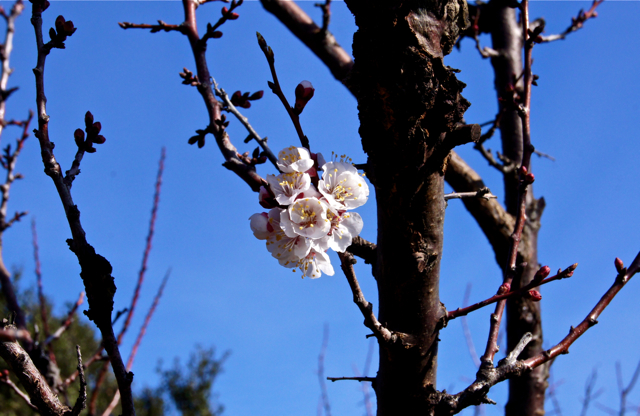
While the strawberries are off to an early start, the apricots trees are just getting into their full bloom – about two weeks later than last February.
Of course I am always excited about how new ideas, crops, innovations, and experiments will reveal themselves throughout the season, whether it’s the new transplanter, the plantings of new crop varieties, or the pruning and training results in the apple orchard. Ultimately, what truly brings this farm alive is not only the turning of the season but the wonderful community of people – our CSA members, customers, and friends who care about the farm, the land, the animals, and all of us who work here. Thank you for supporting this farm – and now: Just let it rain!

Could it be we’ll have strawberries at the beginning of the Main Season in April? Have you signed up for a share yet? Don’t miss out! Sign-up today!
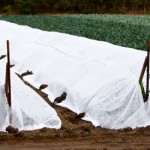 Crop & Field Notes: Getting Ready for Winter
Crop & Field Notes: Getting Ready for Winter
“This food comes from the Earth and the Sky,
it’s the gift of the entire universe
and the fruit of much hard work;
I vow to live a life which is worthy to receive it.”
~ Grace of the Bodhisattva Buddists
The first frost of the season is descending upon us and I hope with more needed rain to follow. With the shortest day only a few weeks away on December 21, marking the Winter Solstice, we have been busy transitioning the farm into winter mode.
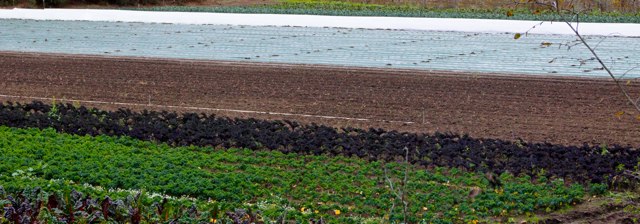
Last week we finished planting next season’s strawberry crop, the fava beans, garlic and onions planted in November responded with a nice growth spurt due to all the warm weather we’ve had recently, the beds for January’s raspberry plantings are prepared, the apple orchards have received their amendments and are cover-cropped, hedgerows are mulched, the last tomato stakes have been pulled and stored away, drainage ditches are cleaned and in place along the edges of fields, equipment is being serviced… the list goes on and we are all grateful for mother nature to let us slow down a bit … soon!
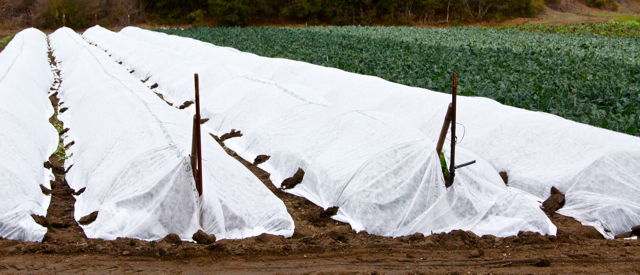
One becomes aware that crops we took for granted as plentiful a mere few weeks ago – tomatoes, summer squash, strawberries – are now out of season. With shorter days and colder temperatures our important allies, the soil microorganisms, key players in supplying nutrients to our crops, will hibernate and as a consequence slow plant growth way down over the next 3-4 months.
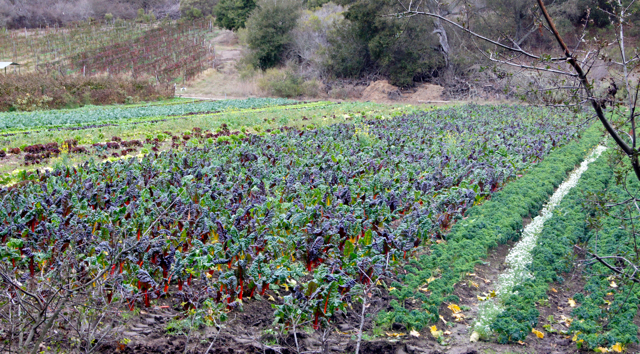
We have done our best to plan for a bountiful harvest throughout the cooler winter months. Most of our winter crops were purposefully planted on a staggered schedule, so as to mature at different times. Crops such as Carrots, Leeks, Parsnips, Celery Root, Cabbage, Cauliflower, Beets, Broccoli and Brussels sprouts, as well as many of our leafy greens are mature enough now to be ready for harvest. These crops will store in the fields growing only very slowly, supplying us with a steady harvest over the next few months.
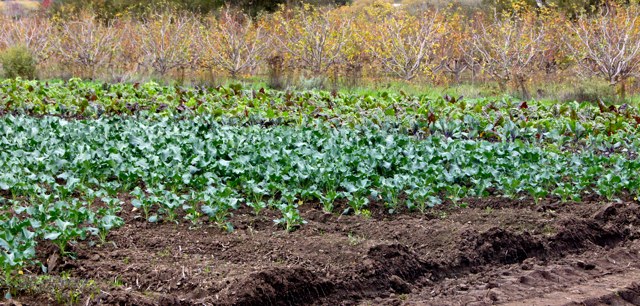
A heartfelt thanks to all who signed up for the 2013-14 Winter Season, which is almost sold out; we are grateful for your commitment.
This may seem a bit early, but I encourage everyone to reserve their Live Earth Farm subscription for next year now. Of the choice shares, only a couple dozen are left and this is also a good time to take advantage of our 2014 season discounts. Your early registration always helps pay for salaries during the slower months ahead, for early spring purchases such as planting stock and seeds, for equipment repair and maintenance, and for investments in improved tools and equipment.
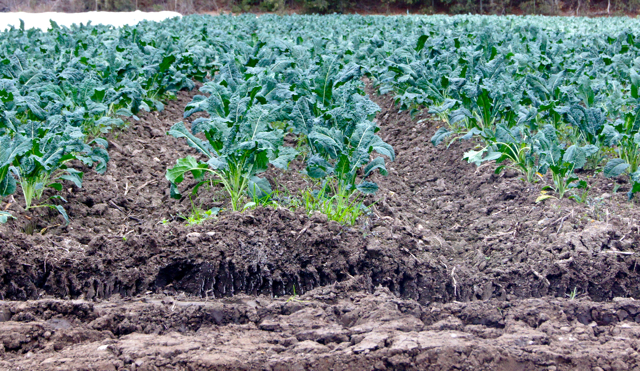
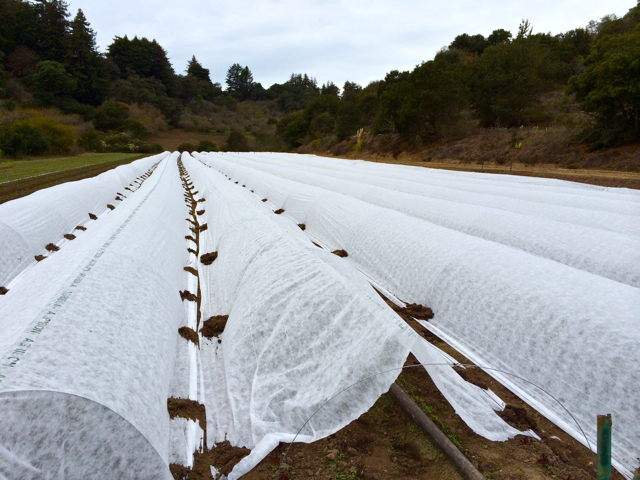
The white fabric covering the rows is called “remay”, and it helps prevent frost burn on delicate crops like lettuce and chard.
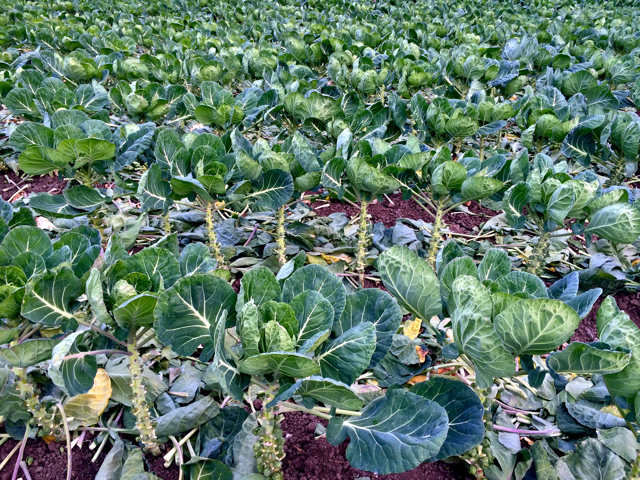
Brussels Sprouts in the field. The lower leaves are removed to help the Sprouts grow and to discourage aphids from infesting the plants.
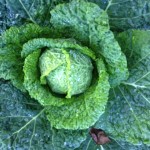 Crop & Field Notes: October 15th, 2013
Crop & Field Notes: October 15th, 2013
There are few places in the world where in the middle of October one can harvest tomatoes, peppers, summer squash, apples, strawberries, and winter squash, in addition to the large variety of greens and root crops available almost year-round. The one crop that stands out however is the mighty Brassica or Mustard family. When I did my field walk today I couldn’t help but snap pictures of this amazingly diverse and nourishing vegetable family that does so well in our coastal climate.
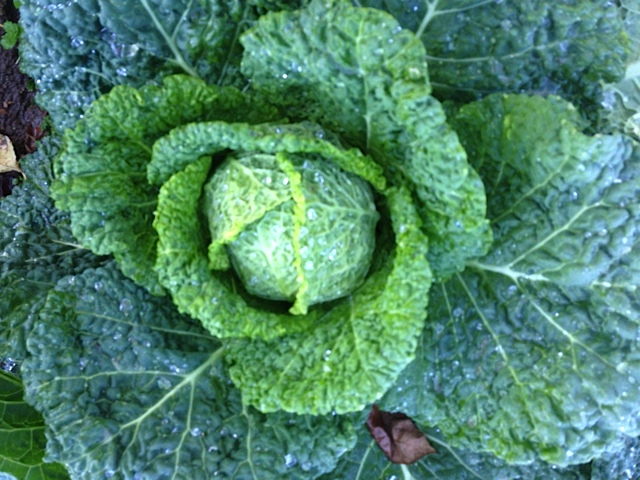
A new head of Savoy Cabbage

Do you see the happy man dancing in this cut-in-half head of Savoy Cabbage?
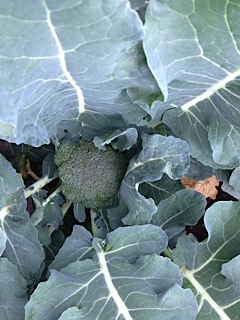
Newly formed florets of Amadeus Broccoli.
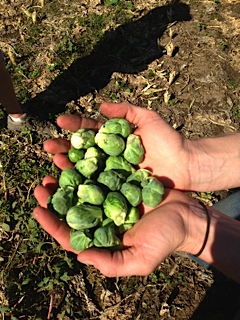
The first Brussels sprouts of the season.
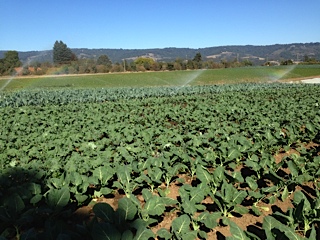
Brassicas like it cool and wet. Where are the winter rains?

Pineapple Guavas have already made their way into the Extra Fruit Option.
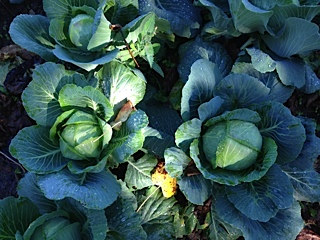
Heads of Green Cabbage forming.

A field of mixed Brassicas.
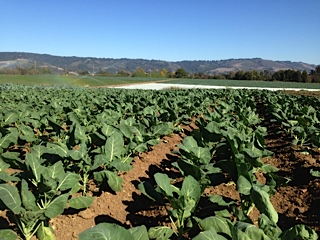
Rows of Collard Greens near the field pictured above.
 A Sprinkle of Rain and the Seasons are Changing
A Sprinkle of Rain and the Seasons are Changing

Double rainbow over the farm.
The rain showers last Saturday were Mother Nature’s way to mark the seasonal transition. It washed the dust off the plants and when I woke to a clear blue sky on Sunday morning, the day of the Fall Equinox, the landscape felt refreshed, the colors brilliant, not the lush greens of spring but the browns, reds and yellows of Fall.

Hedgerow shrub putting on its fall colors.
It’s a lot more challenging to let go of Summer than it is of Spring. Summer is about celebrating growth, and one feels confident that life is abundant. Fall lets us know things are about to change. Plants pull energy from their leaves to store in their roots or seeds; the biotic life-force in our hemisphere turns inward in preparation for winter.
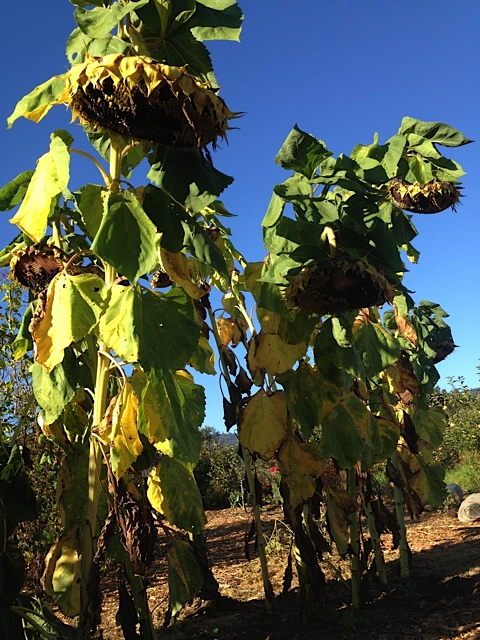
The sunflowers are wilting as summer comes to an end and their heads are heavy with seeds.
Here on the farm preparations in the fields have focused on planting fall and winter crops, Brussels sprouts, red and green cabbage, leeks, carrots, beets, rutabagas, broccoli, celeriac, cauliflower, and many different leafy greens which all grow well during our coastal winter season. The key is to plant early enough for the plants to size before colder weather and shorter days slow down their growth.
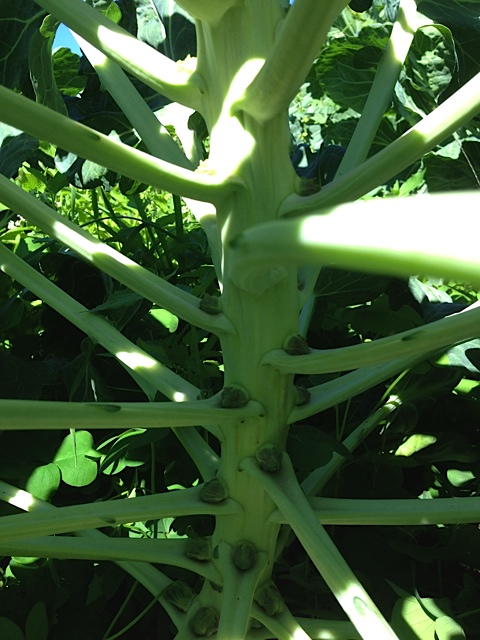
Young Brussels Sprouts
The winter squash harvest is early this year; the Butternut, Delicata, and Sweet Dumplings are already stored and look beautiful, only the Kabocha Squash and Pumpkins are still curing in the field. The apple harvest is in full swing; we just finished the Galas, and now it’s time for the Newtown Pippins, and by mid-October the Fuji’s should be crisp and sweet as well.
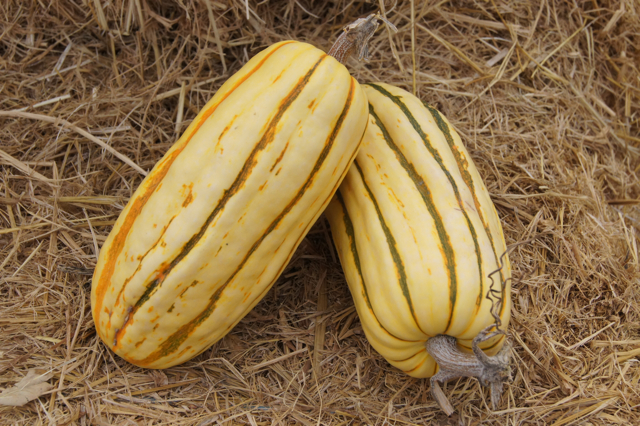
Delicata Squash
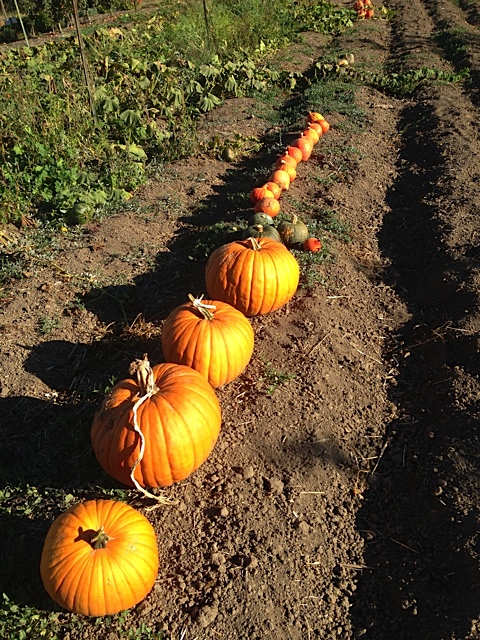
Pumpkins in the field. Are you ready for our Fall Harvest Festival in October?
The last fruit of the season still to be harvested are the Quince, which are almost ripe, the Pineapple guavas, which are starting to size up and will probably ripen by the end of October, and the Persimmons, which are still green and won’t be ripe until early December.
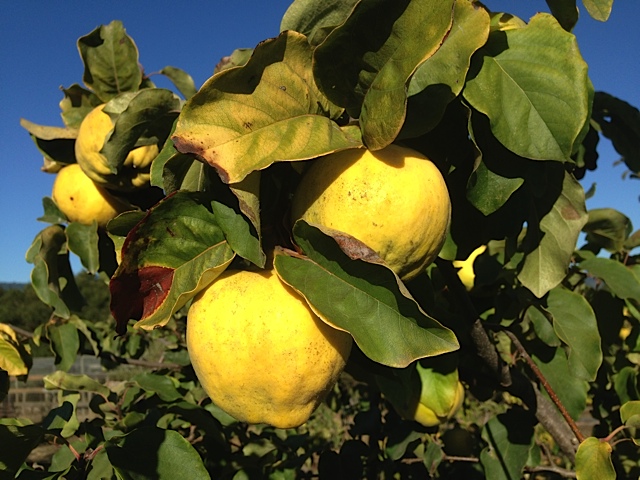
Ripening Quince
The fields where next year’s strawberries, raspberries, artichokes and garlic will be growing are being prepared right now, as rains can sweep through the area in early October delaying preparations significantly at times.
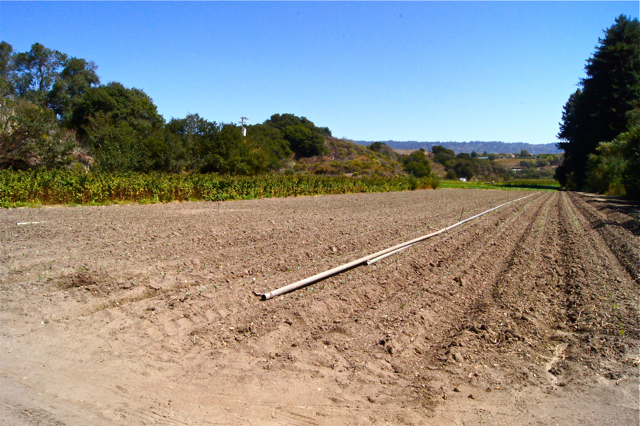
In mid-August, this field had summer squash in it. Now it’s full of recently transplanted cauliflower seedlings for the winter season.
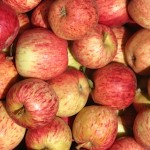 When the Gala apples are ripe, you know summer is almost over
When the Gala apples are ripe, you know summer is almost over
Elisa’s summer vacation is now over, David is back in College, and the summer harvest has reached its peak. Although I resist letting go of summer, the transition into fall has already begun. Besides some early winter squash being ready for harvest and the pumpkins slipping into their orange dresses, the most telling sign of fall is the apple trees loaded with their colorful fruit.
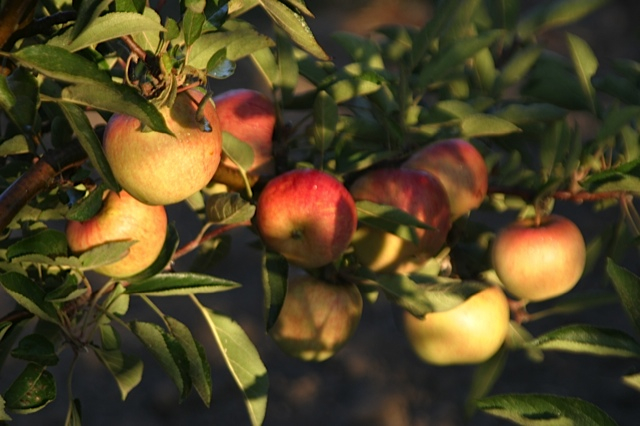
Braeburn Apples
A couple of weeks ago you started to get our earliest apples, the Sommerfelds, all of which are now harvested, sorted, and stored. This week we’ll start harvesting the Royal Galas, their red striped yellowish golden colors, crisp texture and perfect balance of sweet and tart flavors, makes this one my favorite fruit to eat.
During Saturday’s tomato u-harvest, many visitors took advantage of loading up with the temptingly easy to pick low hanging apples and eating them fresh off the tree. For me the pleasure of growing and biting into a fully tree-ripened apple triggers a satisfying sense of appreciation for the history and culture of apple farming in this Valley. Few people know what goes into mastering the growing practices to succeed in offering a great tasting apple.
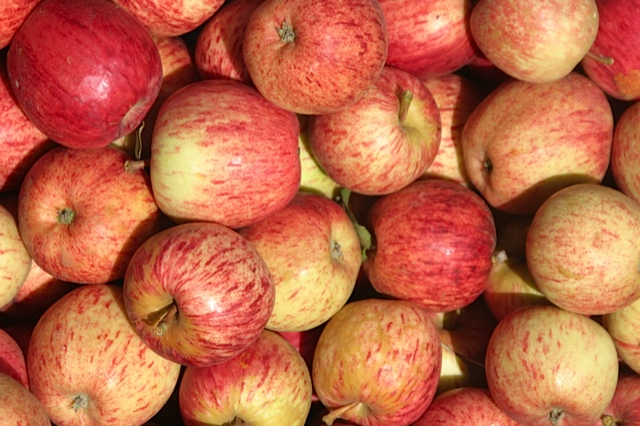
Royal Gala Apples
An apple orchard needs year-round attention, and the perennial cycle is very different from the annual, season-focused vegetable crops we grow. Apples lean heavily on human help and it takes a lot of devotion, from winter pruning through post-harvest cleanup in late fall.
Apples thrive in our climate. One wouldn’t think by driving through the Pajaro Valley that this was once one of the largest apple growing districts in the country. Most of the apple orchards have been pushed over by bulldozers, replaced by the more lucrative berry, vegetable and flower crops. The predominant variety then was the Newtown Pippin, a variety originally from New York, introduced by settlers in the 1850s. Today it is still the trademark apple in Martinelli’s popular apple juice, processed here in Watsonville, and probably the reason why Newtown Pippins are still grown commercially in this area.

Newtown Pippins
Here on the farm, we grow 10 different varieties of apples on approximately 7 acres. Most of the production coming from 5 acres of Fujis, Galas, Newtowns, and Sommerfelds. The other two acres are a diverse mix of two-year-old grafted Jonagolds, McIntosh, Honey Crisp, Braeburn, Empire, and Pink Ladies which will come into full production in the next couple of years.
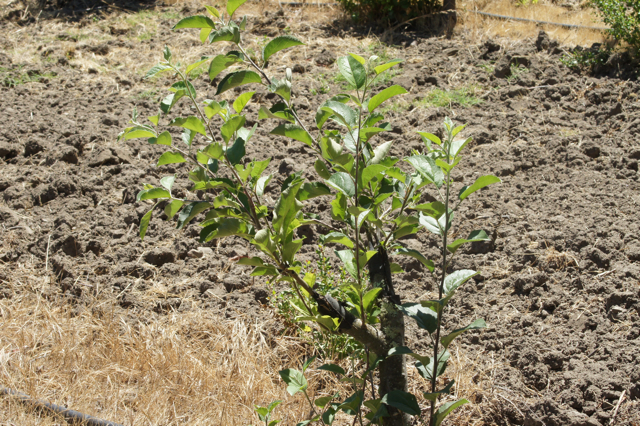
Apple tree grafted earlier this year.
Starting in winter, the dormant season, apple trees first have to be pruned, and then sprayed with dormant oils and sulphur to fend of insect and fungal diseases. Pheromones conveniently manufactured into plastic twist ties are attached to the trees at a precise time in the spring to confuse the mating cycle of codling moths, which will greatly reduce worms from hatching and burrowing into the apples. Once the soil dries the orchard needs to be cultivated, both to control weed competition and trap valuable winter moisture in the ground. In April, beehives are brought in to ensure good pollination, and after a successful fruit set, the entire month of May and part of June is spent hand thinning trees (yes, every single flower cluster is hand thinned from 5 down to 1 or two small fruitlets) to ensure fruit will develop into a marketable size. The first seasonal watering happens sometime in June, and continues as needed until August or September.

Apple bin and ladder near a tree being harvested.
Then it’s time to prepare for harvest: bins need to be placed among the trees in the orchard rows, and from early September until late October we harvest thousands of pounds of apples of which we hope a high percentage is of good quality to sell fresh in order to maximize our return.

Bins of harvested Royal Galas waiting to be picked up and taken to the sorter.
This year we are very excited to use an old refurbished apple sorter (see pictures below) to more efficiently sort by size and quality. Some of the quality criteria include color and shape, and any fruit defects such as worm damage, scab lesions, sunburned, bruised and misshapen fruit go into the juicer bin. As soon as the fruit is harvested and windfalls are picked off the ground, we add soil amendments and sow a cover crop before the wet winter months are upon us. Then the cycle starts again…
We hope you can join us for our Discovery Program fundraiser, Slice – A Dinner in the Orchard, on September 14th held in the middle of one of our apple orchards (get your tickets now, it’s only 10 days away) – to honor and celebrate the history and culture of this wonderful fruit and support our educational efforts at the same time. Don’t miss out; this event will be lots of fun!





